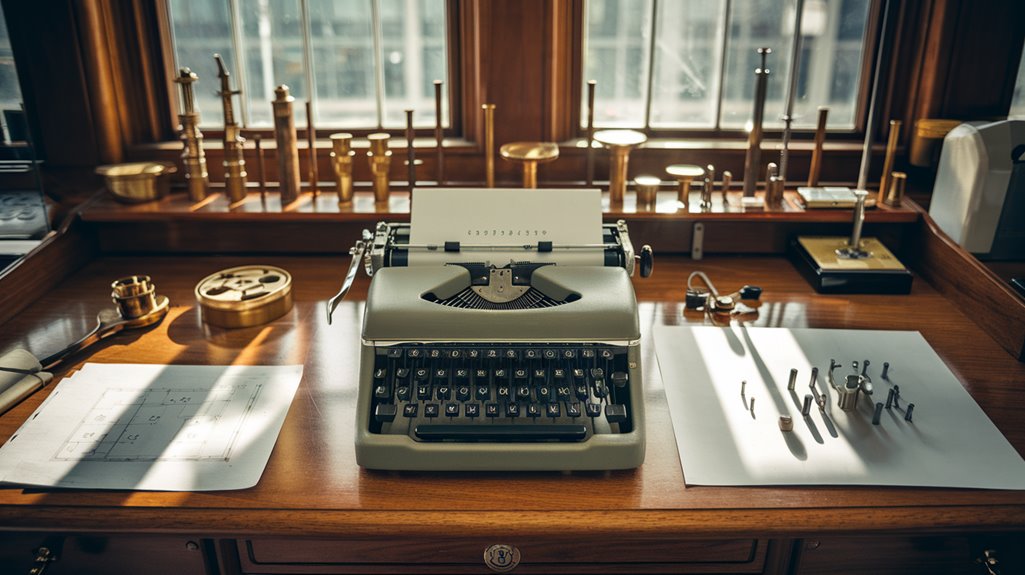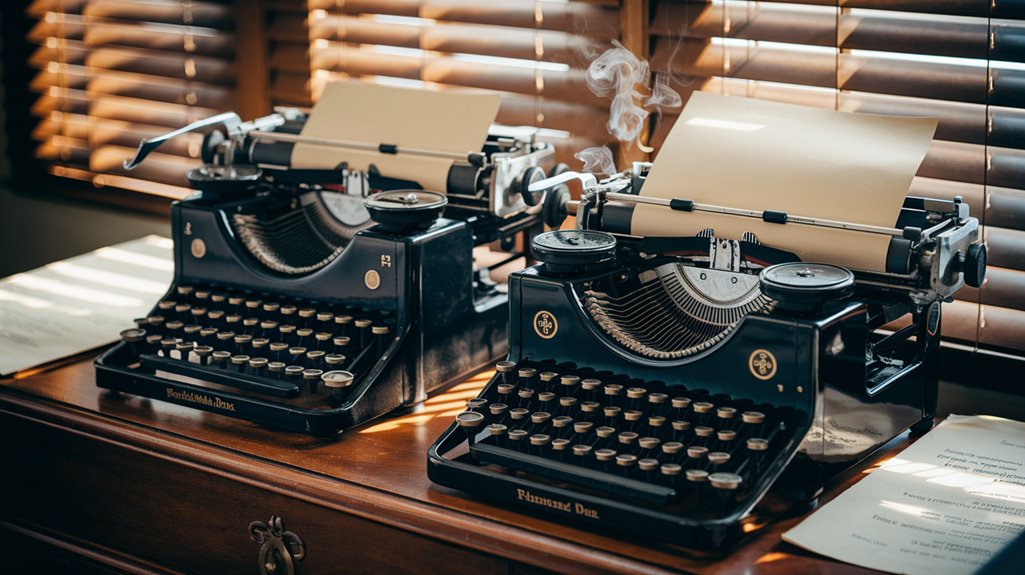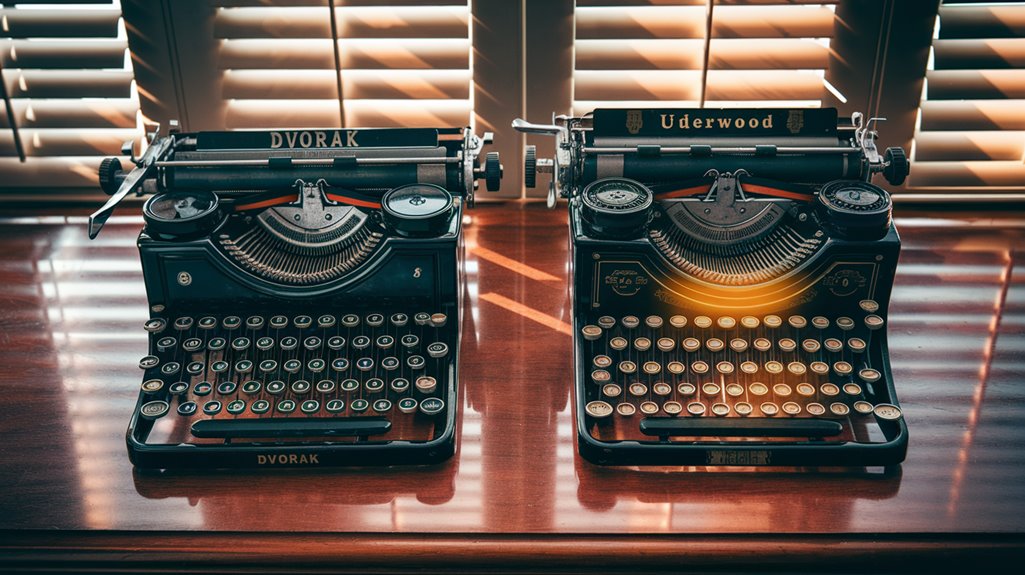Dvorak vs. QWERTY: Which Keyboard Really Rules?
Did you know that your fingers travel up to 16 miles during an average workday of typing on a QWERTY keyboard? That's a lot of movement for a layout that wasn't designed with your comfort in mind. While you've probably never questioned the familiar arrangement of keys beneath your fingertips, there's a fascinating debate about whether we're all using the wrong keyboard layout. The answer isn't as straightforward as you might think, and what you'll learn about this typing rivalry could change how you work forever.
The Origins: How QWERTY and Dvorak Came to Be

While many assume the QWERTY keyboard layout was designed for ideal typing efficiency, its origins tell a different story. In the 1870s, Christopher Latham Sholes faced significant design challenges with his typewriter invention.
After discovering that alphabetically arranged keys would jam frequently, he spent five years rearranging the layout to prevent this mechanical issue. The original design included a piano-like keyboard that proved impractical for daily use. The solution was to place common letters strategically far apart to prevent mechanical jams.
The keyboard evolution took a different turn in 1936 when Augustus Dvorak introduced his alternative layout. Unlike QWERTY's mechanical-focused design, Dvorak's layout was scientifically engineered for typing efficiency, placing common letters on the home row and emphasizing alternating hand use.
While you'd think Dvorak's superior ergonomics would have made it the standard, QWERTY's early adoption through Remington typewriters had already secured its place in typing history.
Speed vs. Comfort: A Battle of Design Philosophy
Although both keyboard layouts claim to serve typists' needs, QWERTY and Dvorak represent fundamentally different design philosophies in the battle between speed and comfort.
While QWERTY emerged from mechanical typewriter constraints, Dvorak prioritizes typing ergonomics through scientific design principles.
You'll find that Dvorak places 70% of keystrokes on the home row, compared to QWERTY's 32%, promoting efficient finger movement and reduced strain.
The layout encourages alternating hand use and inboard stroke flow, potentially making your typing experience more comfortable.
However, user adaptation is a significant challenge, and speed improvements aren't guaranteed.
If you're already typing above 50 WPM on QWERTY, switching mightn't be worth the effort.
The decision ultimately depends on your priorities – whether you value potential ergonomic benefits over the time investment required to relearn typing.
The Science Behind Finger Movement and Typing Efficiency
Scientific research into typing mechanics reveals that efficient finger movement depends on several key factors beyond raw speed. Your finger agility and typing rhythm are greatly influenced by keyboard layout and movement patterns. Typists travel extensively during a typical workday, covering up to 20 miles with their fingers on QWERTY layouts.
Studies show that consistent finger-to-key mapping and hand alternation are essential for ideal performance. Colemak's design specifically keeps shortcuts like QWERTY to help users transition more smoothly.
Here's what research reveals about typing efficiency:
- Fast typists maintain fixed hand positions and use predictable finger movements, regardless of formal training.
- Hand alternation creates a natural typing rhythm and reduces strain, with Dvorak's layout specifically designed for this purpose.
- Your fingers travel shorter distances on Dvorak, with 70% of keystrokes on the home row compared to QWERTY's 32%.
The science clearly demonstrates that minimizing finger movement and promoting hand alternation leads to more efficient, comfortable typing experiences.
Real-World Performance: What Studies Actually Show
The real-world evidence for Dvorak's superiority isn't as clear-cut as theoretical studies might suggest.
While some research shows modest improvements in Dvorak efficiency, the gains often don't justify the substantial retraining time required. The Navy study reported a 75% speed increase, but methodological flaws cast doubt on these results. Claims supporting Dvorak's superiority came from biased promotional sources.
More reliable studies paint a different picture. The Western Electric study found only a 2.6% improvement after 104 hours of training, while the GSA study revealed that typists needed over 25 days just to match their QWERTY speeds. Modern QWERTY users have achieved fastest recorded typing speeds, challenging Dvorak's claims of superior efficiency.
Even when considering typing accuracy, the advantages aren't overwhelming. The Santa Fe Institute study showed just a 4% improvement in high-frequency letter combinations.
You'll need to weigh these minimal gains against the significant time investment required to master the Dvorak layout.
Making the Switch: Key Factors to Consider

Before committing to a Dvorak keyboard layout, you'll need to weigh several practical considerations against potential benefits.
When conducting your cost analysis, consider both immediate expenses like a new keyboard and long-term ergonomic benefits such as reduced strain and faster typing speeds. Users who switch to Dvorak experience a 43.3% reduction in finger travel distance compared to QWERTY. Early studies in the Tacoma school district showed Dvorak students learned typing in one-third the time of QWERTY learners.
The shift comes with these key challenges:
- You'll face a steep learning curve that can last months, potentially affecting your productivity.
- You might need to toggle between layouts since some software and public computers don't support Dvorak.
- Standard keyboard shortcuts become more awkward, requiring additional software solutions.
Despite these hurdles, Dvorak's design offers significant advantages with 70% of keystrokes on the home row and better hand alternation.
Your decision should balance these practical limitations against the potential for improved typing efficiency and comfort.










